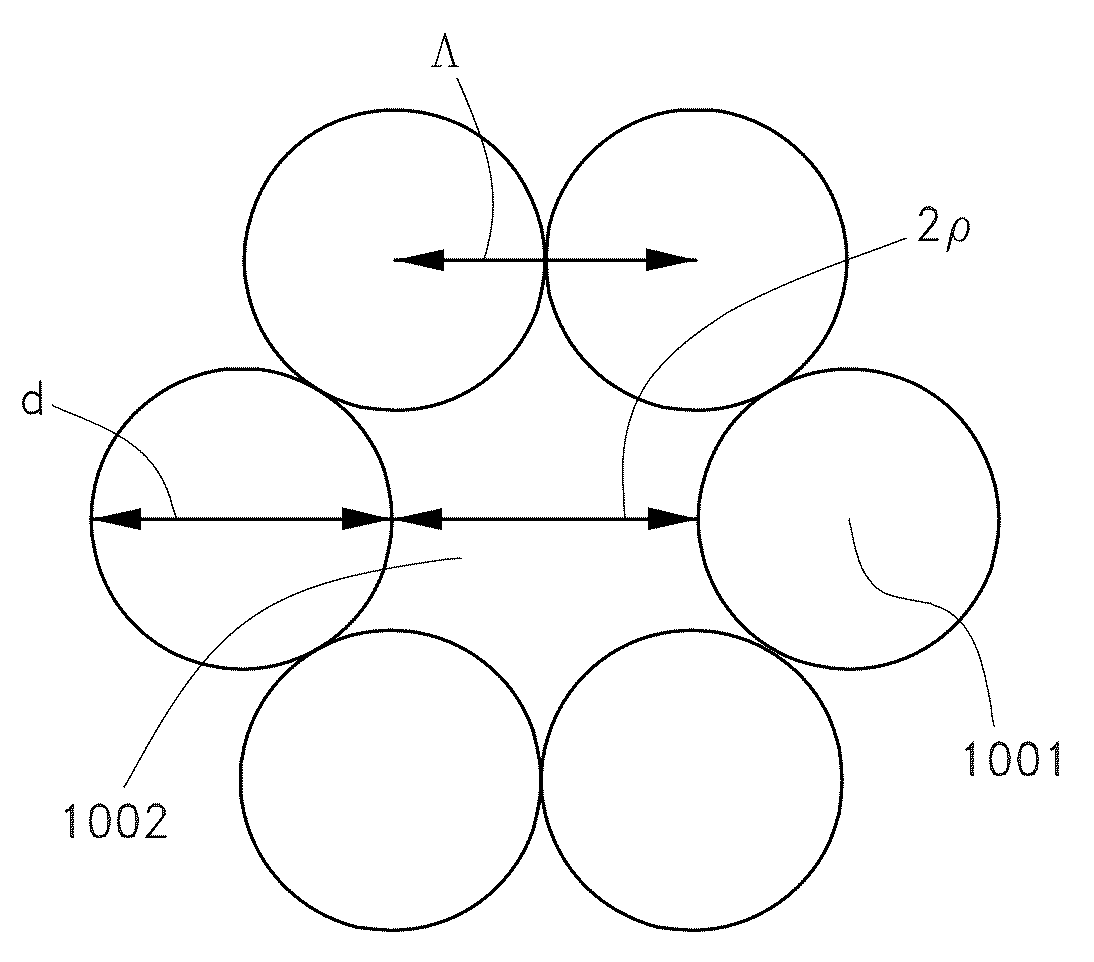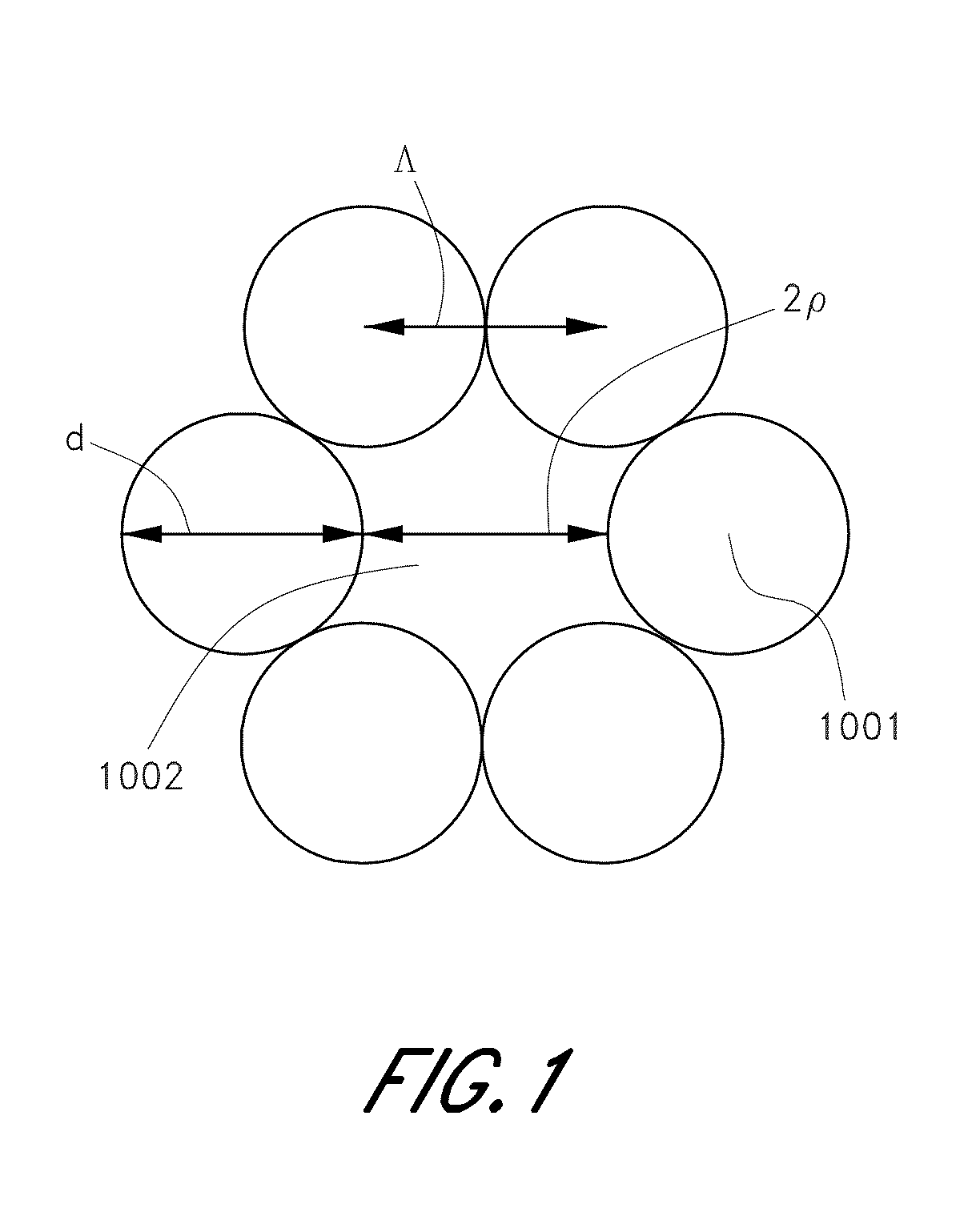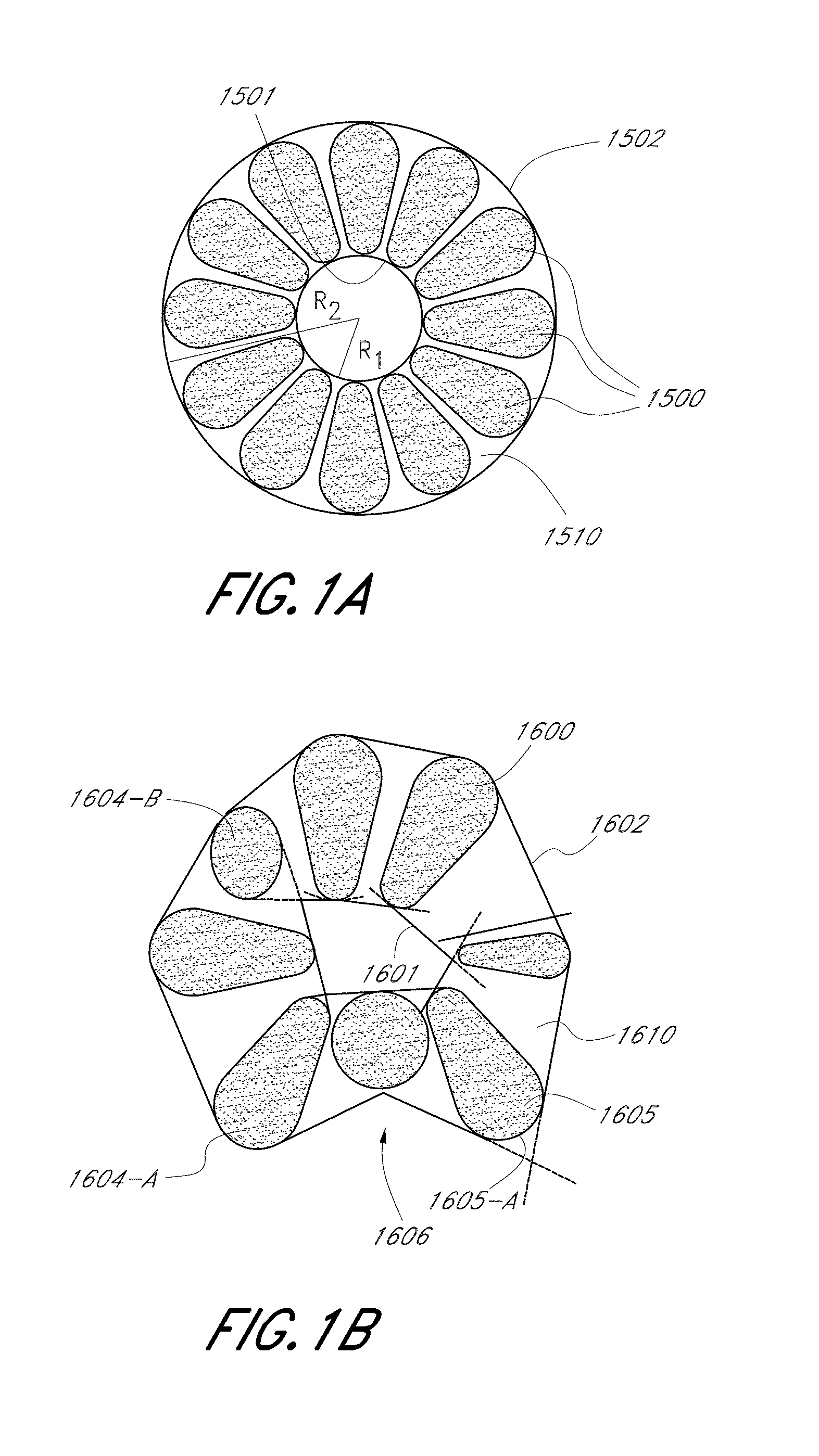Ultra small core fiber with dispersion tailoring
a technology of small core fibers and tailoring, applied in the field of optical fibers, can solve the problems of large air hole size, large number of air holes, and loss of confinemen
- Summary
- Abstract
- Description
- Claims
- Application Information
AI Technical Summary
Benefits of technology
Problems solved by technology
Method used
Image
Examples
Embodiment Construction
[0035]In the following detailed description, reference is made to “filling fraction,” also known as “void-filling fraction” or “air-filling” fraction. In certain embodiments, the filling fraction refers to a cross-sectional area occupied by certain features in a region (such as, e.g., air holes in a cladding) divided by a total cross-sectional area of the region. The term filing factor is also used herein synonymously with filling fraction.
[0036]In certain such embodiments, the filling fraction may be determined for periodic features in the region, where, for example, a basic unit cell is repeated to fill the region. One possible expression for the filling fraction for circular features having a diameter d and center-to-center spacing (pitch) Λ in an infinite triangular matrix was disclosed in U.S. Pat. No. 6,444,133, entitled “Method of Making Photonic Bandgap Fibers” as the following formula:
FillingFraction=π23(dΛ)2
[0037]This formula for the filling fraction may be applied to, for...
PUM
| Property | Measurement | Unit |
|---|---|---|
| transverse width | aaaaa | aaaaa |
| transverse width | aaaaa | aaaaa |
| diameter | aaaaa | aaaaa |
Abstract
Description
Claims
Application Information
 Login to View More
Login to View More - R&D
- Intellectual Property
- Life Sciences
- Materials
- Tech Scout
- Unparalleled Data Quality
- Higher Quality Content
- 60% Fewer Hallucinations
Browse by: Latest US Patents, China's latest patents, Technical Efficacy Thesaurus, Application Domain, Technology Topic, Popular Technical Reports.
© 2025 PatSnap. All rights reserved.Legal|Privacy policy|Modern Slavery Act Transparency Statement|Sitemap|About US| Contact US: help@patsnap.com



